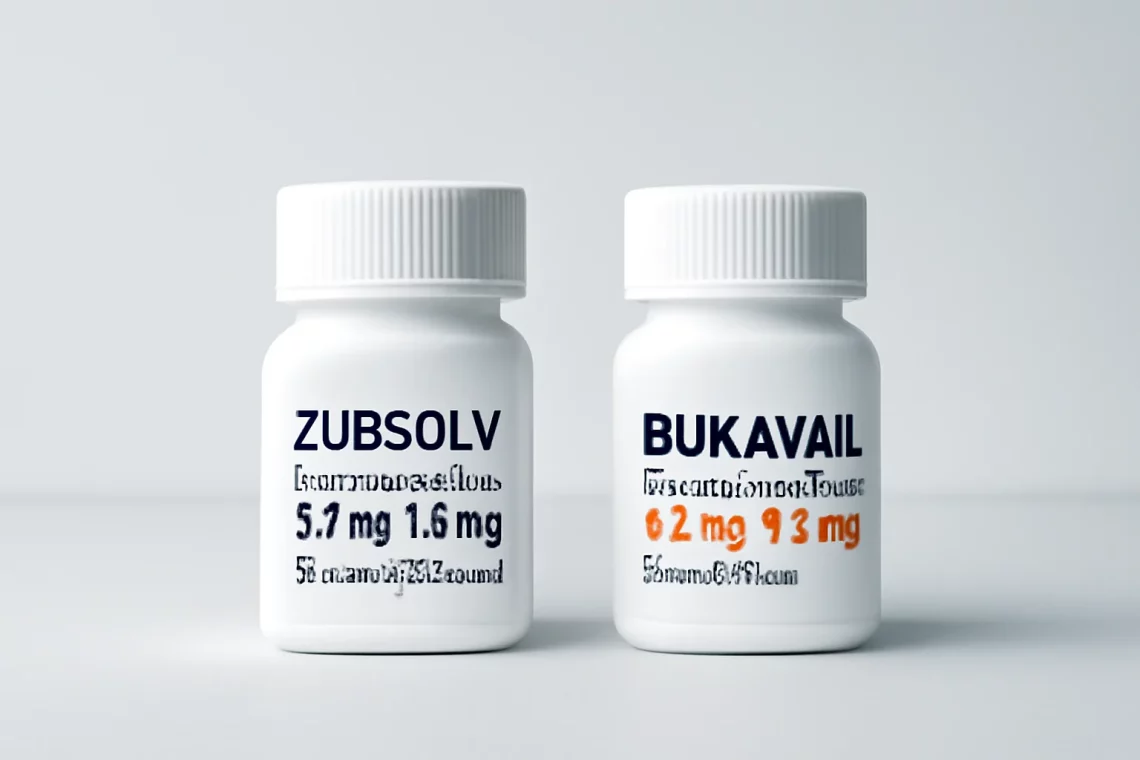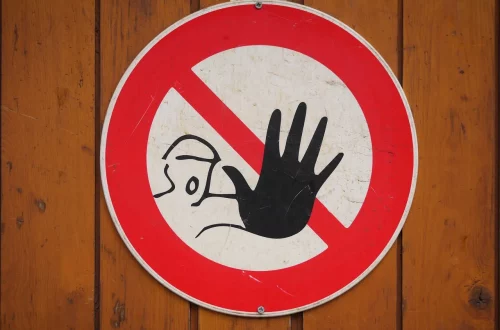
Zubsolv vs Bunavail: Which Medication is Right for You?
In recent years, the opioid crisis has prompted the development of various medications aimed at helping individuals struggling with opioid dependence. Among these medications, Zubsolv and Bunavail have emerged as popular options. Both are designed to assist individuals in managing their addiction and reducing cravings. However, despite their similar purposes, these two medications possess distinct characteristics that may influence a patient’s choice.
Zubsolv and Bunavail are both formulations of buprenorphine and naloxone, two active ingredients known for their effectiveness in treating opioid use disorder. Buprenorphine works by partially activating opioid receptors in the brain, alleviating withdrawal symptoms and cravings, while naloxone serves to counteract the effects of opioids in case of misuse. While both medications aim to help patients achieve recovery, they differ in their delivery methods, dosing, and potential side effects. Understanding these differences can empower individuals and healthcare professionals to make informed decisions when selecting a treatment plan.
As the opioid epidemic continues to challenge public health, finding the right medication can be a critical step toward long-term recovery. Whether you are a patient seeking information or a healthcare provider looking to guide your patients, a detailed exploration of Zubsolv and Bunavail can provide clarity on which option may be more suitable for different circumstances.
Understanding Zubsolv
Zubsolv is a sublingual film that contains buprenorphine and naloxone, specifically designed to treat opioid dependence. The sublingual administration allows for quicker absorption into the bloodstream compared to traditional oral tablets, which can enhance its effectiveness. The film dissolves under the tongue, providing a convenient and discreet option for users.
One of the significant advantages of Zubsolv is its dosage flexibility. Available in multiple strengths, healthcare providers can tailor the treatment to meet the specific needs of each patient. This personalized approach can help in managing withdrawal symptoms more effectively and can lead to a higher likelihood of adherence to the treatment plan.
Moreover, Zubsolv has a favorable safety profile. The combination of buprenorphine and naloxone is designed to minimize the risk of misuse. If someone attempts to inject Zubsolv to achieve a high, the naloxone component will block the euphoric effects of the opioid, acting as a deterrent against abuse. This mechanism allows patients to focus on recovery without the added concern of potential misuse.
However, like any medication, Zubsolv is not without its side effects. Commonly reported side effects include headache, nausea, and constipation. While these side effects can be bothersome, they often diminish as the body adjusts to the medication. It is essential for patients to communicate with their healthcare provider about any adverse effects they may experience, as adjustments to the treatment plan might be necessary.
In summary, Zubsolv offers a unique and effective solution for individuals dealing with opioid dependence. Its convenient sublingual form, dose flexibility, and safety features make it a viable option for many patients seeking recovery.
Exploring Bunavail
Bunavail is another sublingual film formulation that combines buprenorphine and naloxone for the treatment of opioid use disorder. Similar to Zubsolv, Bunavail dissolves under the tongue, allowing for rapid absorption. However, Bunavail is unique in its formulation, as it contains a proprietary technology that may enhance the drug’s bioavailability compared to other buprenorphine products.
One of the standout features of Bunavail is its lower dosage compared to Zubsolv, which can make it a suitable option for patients who may be sensitive to the effects of buprenorphine. The dosing schedule for Bunavail is also flexible, allowing healthcare providers to adjust as needed based on a patient’s progress and response to treatment.
Bunavail’s design aims to improve patient convenience and adherence. The film is easy to carry and use, which can be particularly beneficial for individuals who lead busy lives or prefer discreet dosing options. This convenience factor can contribute to better treatment outcomes, as patients are more likely to adhere to their prescribed regimen.
Despite its advantages, Bunavail also has potential side effects. Patients may experience symptoms such as dizziness, dry mouth, or fatigue. It’s crucial for individuals to discuss these effects with their healthcare provider to determine whether Bunavail is the right choice for their treatment needs.
In conclusion, Bunavail presents an effective alternative for those seeking treatment for opioid dependence. Its unique formulation, convenient administration, and flexible dosing make it an appealing option for many patients on their path to recovery.
Comparative Analysis: Zubsolv vs. Bunavail
When considering Zubsolv and Bunavail, it is essential to evaluate the key differences and similarities between the two medications. Both serve the same primary purpose of treating opioid use disorder, but their formulation, dosing, and overall patient experience can vary significantly.
One notable difference lies in their bioavailability and absorption rates. Bunavail’s proprietary technology may provide better absorption, which could lead to enhanced effectiveness for some individuals. This aspect can be particularly important for patients who may have issues with medication absorption or who have previously struggled with treatment adherence.
On the other hand, Zubsolv offers a broader range of dosing options, which allows for more precise titration based on individual patient needs. This flexibility can be critical in managing withdrawal symptoms and cravings effectively.
Another factor to consider is the side effect profile of each medication. While both Zubsolv and Bunavail share similar side effects, the severity and frequency of these effects may differ from person to person. It is essential for patients to monitor their reactions to either medication and communicate openly with their healthcare provider to ensure optimal treatment decisions.
Additionally, the potential for misuse is a vital consideration. Both medications contain naloxone to deter abuse; however, the effectiveness of this deterrent may vary based on how each medication is formulated and administered. Patients should be educated about the importance of using these medications as prescribed and the risks associated with misuse.
Ultimately, the choice between Zubsolv and Bunavail should be made in collaboration with a healthcare provider. Individual patient needs, preferences, and treatment goals must guide the decision-making process. Each medication has its strengths and may be better suited for different individuals based on their unique circumstances.
Patient Perspectives and Considerations
When navigating the landscape of opioid dependence treatment, patient perspectives play a crucial role in selecting the most appropriate medication. Both Zubsolv and Bunavail have garnered positive feedback from users, but experiences can vary widely.
Many patients appreciate the sublingual film delivery method of both medications. This form of administration allows for discreet use, which is particularly appealing for individuals who may feel stigmatized by their condition. The ability to take the medication without drawing attention can foster a sense of normalcy and privacy during treatment.
Moreover, patients often report a significant reduction in cravings and withdrawal symptoms once they begin treatment with either Zubsolv or Bunavail. This improvement can lead to increased motivation for recovery and a more positive outlook on their overall mental health. As individuals regain control over their lives, they often express gratitude for the opportunity to pursue a healthier lifestyle.
However, patient experiences are not universally positive. Some individuals may struggle with side effects that affect their daily functioning. For instance, nausea or fatigue can hinder productivity and quality of life, prompting patients to reconsider their treatment options. Open communication with healthcare providers is essential in these situations, as there may be alternative medications or adjustments to the treatment plan that can alleviate these concerns.
Furthermore, the cost of medication is a significant consideration for many patients. Insurance coverage can vary, leading to disparities in out-of-pocket expenses for Zubsolv and Bunavail. Patients must weigh the financial implications of their treatment choices, potentially seeking assistance programs or discussing options with their healthcare provider.
In summary, patient perspectives on Zubsolv and Bunavail highlight the importance of individualized treatment. While both medications offer valuable tools in the fight against opioid dependence, personal experiences, preferences, and challenges must be acknowledged and addressed in the decision-making process.
In closing, while Zubsolv and Bunavail are effective treatments for opioid dependency, it’s crucial for individuals to consult with a healthcare professional regarding their specific needs. This article is for informational purposes only and does not constitute medical advice. If you have health concerns or conditions, please seek the guidance of a qualified medical professional.




